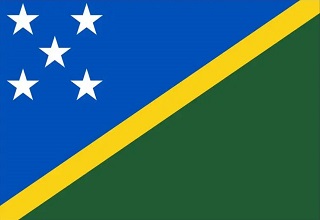Regarding the Inspection and Quarantine Requirements for Coconut from Indonesia to China
I. Inspection and quarantine basis
(I) "China Biosafety Law";
(II) "China Entry and Exit Animal and Plant Quarantine Law" and its implementing regulations;
(III) "China Food Safety Law" and its implementing regulations;
(IV) "Regulations on Supervision and Administration of Inspection and Quarantine of Imported Fruits";
(V) "Protocol on Plant Quarantine Requirements for the Import of Fresh Coconuts from Indonesia to China between the Customs of the People's Republic of China and the Indonesian Quarantine Bureau".
II. Names of commodities allowed for entry
Fresh coconut, scientific name Cocos nucifera, English name Coconut.
III. Permitted origin
Coconut producing areas in Indonesia.
IV. Approved orchards and packaging plants
Coconut orchards and packaging plants exported to China must be reviewed by the Indonesian National Quarantine Bureau and approved for registration by the Chinese Customs. The registration information should include the name, address and registration number so that the export goods can be accurately traced when they do not meet the relevant regulations. The Indonesian National Quarantine Bureau shall provide the registration list to the Chinese Customs before export and update it every year, and publish it on the website after review and approval by the Chinese Customs.
V. Quarantine pests of concern
1. Aleurodicus dispersus
2. Ischnaspis longirostris
3. Lepidosaphes tapleyi
4. Planococcus lilacinus
5. Planococcus minor
6. Vinsonia stellifera
VI. Pre-export management
(I) Orchard management.
1. Coconut orchards exporting to China should establish and implement good agricultural practices (GAP) to ensure the traceability of the production process, maintain sanitary conditions in the orchard, and implement integrated pest management (IPM), such as pest monitoring, chemical or biological control, and agricultural operations.
2. Orchards exporting to China must carry out monitoring and integrated prevention of quarantine pests of concern to Chinese Customs under the supervision and guidance of the Indonesian National Quarantine Bureau or its authorized agency. Pest monitoring and prevention should be carried out under the guidance of technical personnel. Technical personnel should be trained by the Indonesian National Quarantine Bureau or its authorized agency.
3. According to the characteristics of pests, orchards exporting to China must adopt visual inspection, physical or chemical trapping and other methods to carry out monitoring. For scale insects, orchards must be monitored at least once every 15 days. If pests or corresponding symptoms are found during monitoring, prevention and control measures including chemical or biological methods should be taken immediately to control the occurrence of pests or maintain a low level of pest prevalence.
4. Orchards exporting to China should record the monitoring and prevention information of pests and keep it for at least two years, and provide it to Chinese Customs upon request. The records should include information such as the active ingredients of chemical agents used in the production process, the date of application and the dosage.
(II) Packaging plant management.
1. The processing, packaging, storage and shipment of coconuts exported to China must be carried out under the quarantine supervision of the Indonesian National Quarantine Bureau or its authorized officials.
2. The packaging factory for coconuts exported to China should be clean and hygienic, the ground should be hardened, and there should be a raw material storage area and a finished product warehouse; the processing, handling, storage and other functional areas of coconuts exported to China should be relatively independent and reasonably laid out, and isolation measures should be taken from the living area and there should be an appropriate distance.
3. During the processing and packaging process of coconuts exported to China, they should be manually selected, graded and cleaned to remove diseased fruits, insect fruits, rotten fruits, deformed fruits, branches and leaves, fruit stalks or other plant residues and soil.
4. If the packaged coconuts need to be stored, they should be immediately put into storage and placed in the same storage warehouse with coconuts with the same plant quarantine conditions, and stored separately from other coconuts to avoid reinfection by pests.
5. Registered packaging plants should establish a traceability system to ensure that coconuts exported to China can be traced back to registered orchards, and record relevant information such as the processing and packaging date, the name of the source orchard or its registration number, quantity, export date, export quantity, country of export, container number, seal number, etc. If chemical agents are used during processing, the date of use, name, active ingredient, dosage and other information of the chemical agents should be recorded. The records should be kept for at least two years.
(III) Packaging requirements.
1. Packaging materials should be clean and unused, and meet the relevant plant quarantine requirements of China. If wooden packaging is used, it must comply with the requirements of International Standard for Phytosanitary Measures No. 15.
2. Each packaging box must be marked in Chinese or English with information such as the fruit name, variety, origin (country and province), orchard and packaging plant name or its registration number. Each packaging box and pallet must be marked in Chinese or English with "输往中华人民共和国" or "Exported to the People's Republic of China".
3. Containers loaded with coconuts exported to China must be checked for good sanitary conditions before packing. The container should be sealed and its seal should be intact when it arrives at the Chinese entry port.
(IV) Pre-export inspection and quarantine.
1. Before export, the Indonesian National Quarantine Bureau shall sample and inspect each batch of coconuts exported to China at a rate of 2%. If there are no plant quarantine issues within two years, the sampling rate will be reduced to 1%.
2. If branches, leaves, fruit stalks, soil or quarantine pests of concern to the Chinese Customs are found, the entire batch of goods shall not be exported to China, and the coconut exports from the relevant orchards and packaging plants to China shall be suspended depending on the situation. The Indonesian National Quarantine Bureau shall find out the reasons and take corrective measures; at the same time, keep the records of seizures and provide them to the Chinese Customs upon request.
(V) Requirements for plant quarantine certificates.
For goods that have passed the quarantine, the Indonesian National Quarantine Bureau shall issue a phytosanitary certificate in accordance with International Standard for Phytosanitary Measures No. 12, indicating the name of the orchard and packaging plant or its registration number, and fill in the following additional statement: "This consignment complies with requirements specified in the Protocol of Phytosanitary Requirements for Export of Fresh Coconuts from Indonesia to China, and is free from the quarantine pests of concern to China."
VII. Entry Inspection and Quarantine and Disqualified Treatment
When coconuts exported to China arrive at the Chinese entry port, the Chinese Customs will verify the relevant documents and labels, and implement inspection and quarantine in accordance with the following requirements.
(I) Verification of relevant certificates and labels.
1. Verify whether the imported coconuts have obtained the "Entry Animal and Plant Quarantine Permit".
2. Verify whether the phytosanitary certificate complies with the provisions of Article 6, paragraph (V) of this Announcement.
3. Verify whether the labels on the packaging boxes or pallets comply with the provisions of Article 6, paragraph (C) of this Announcement.
(II) Entry Inspection and Quarantine.
1. Coconuts exported to China should be imported from ports where Chinese customs allows the import of fruits.
2. According to relevant laws, administrative regulations, rules, etc., imported coconuts shall be subject to inspection and quarantine. If they pass the inspection and quarantine, they shall be allowed to enter the country.
(III) Disqualified treatment.
1. If it is found that they come from unregistered orchards or packaging plants, the batch of goods shall not be allowed to enter the country.
2. If quarantine pests of concern to Chinese Customs or other newly occurring quarantine pests in Indonesia are found, or soil, branches, leaves, fruit stalks, other plant residues, etc. are found, the batch of goods shall be treated with pest control, returned or destroyed.
3. If it is found that it does not meet the national food safety standards of China, the batch of goods shall be returned or destroyed.
4. If the above-mentioned unqualified situations are found, Chinese Customs will immediately notify the Indonesian National Quarantine Bureau and suspend the import of coconuts from the relevant orchards and packaging plants as appropriate. The Indonesian National Quarantine Bureau shall find out the reasons for the non-compliance and require the relevant orchards and packaging plants to take improvement measures to prevent similar situations from happening again. China Customs will decide whether to cancel the suspension measures based on the rectification results of the Indonesian National Quarantine Bureau.
GACC
Nov. 15, 2024




